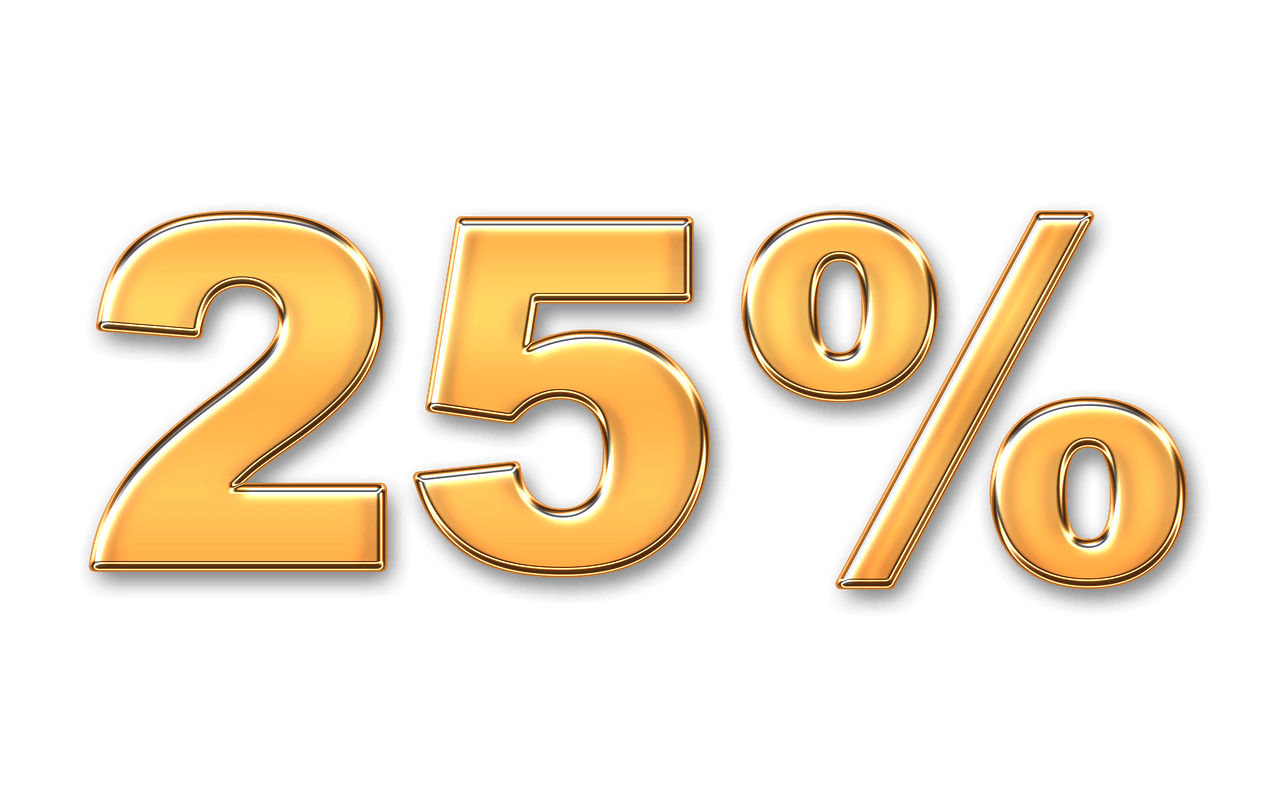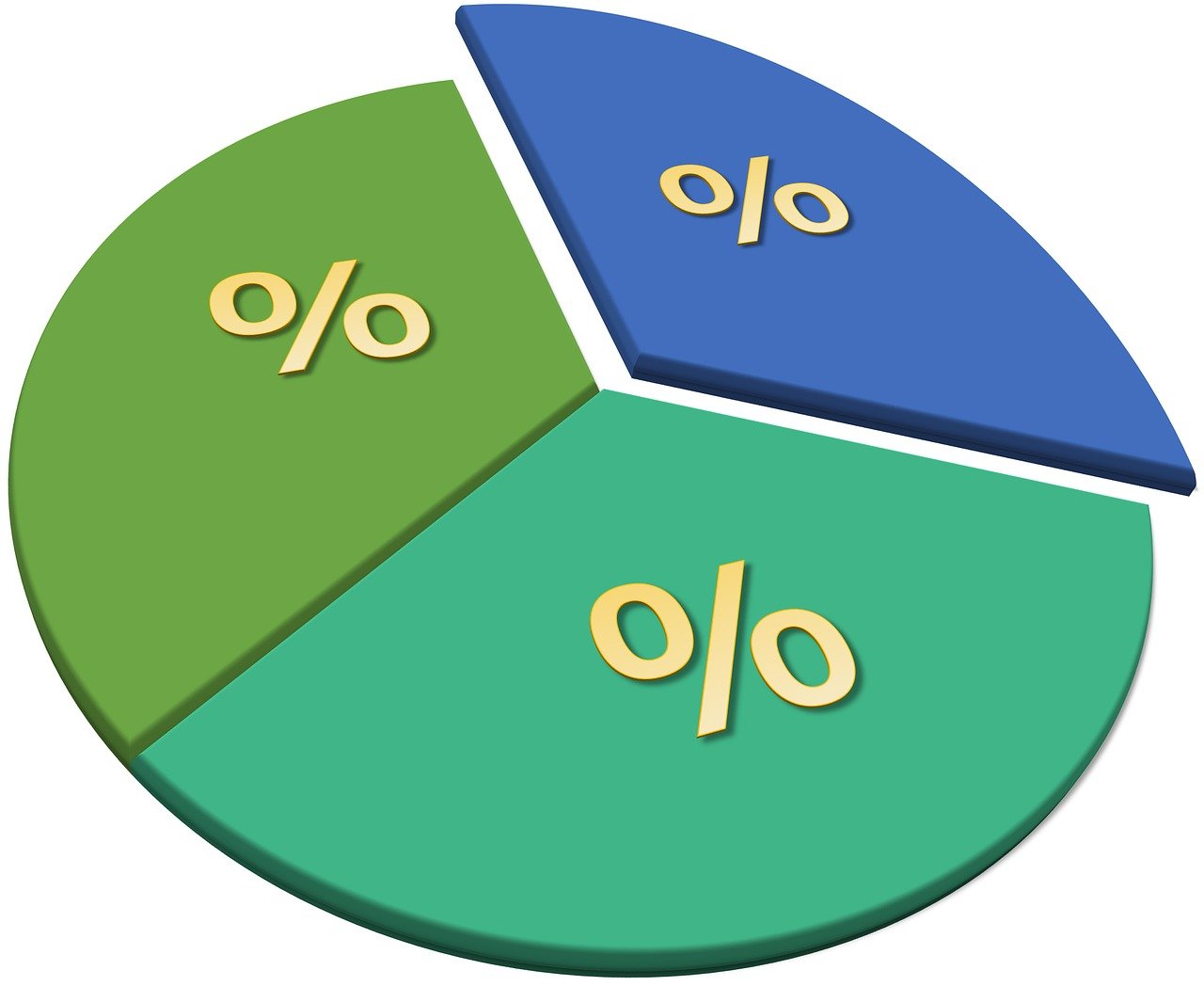Percentage Calculator
Result:
Our comprehensive percentage calculator is your complete solution for all percentage calculations. Whether you need to find what percent X is of Y, calculate percentage increases or decreases, determine discounts, or solve complex percentage problems, this tool provides accurate results with detailed explanations.
Percentage Mastery
Understanding percentages is fundamental for success in academics, business, finance, and everyday decision-making. Master percentage calculations to analyze data, compare values, calculate changes, and make informed choices.
From calculating tax rates and tips to analyzing business growth and academic grades, percentage skills are essential in countless real-world scenarios. Our detailed guide will help you master every aspect of percentage calculations through clear explanations, practical examples, and step-by-step solutions.
Understanding Percentages - Complete Guide
A percentage is a mathematical concept that expresses a number as a fraction of 100. The word "percent" literally means "per hundred" (from Latin "per centum"), making it a standardized way to compare quantities regardless of their original scale.
Percentage Basics
Symbol: % (percent sign)
Meaning: Parts per hundred
Range: 0% to 100% (and beyond)
Decimal equivalent: % ÷ 100
Example: 45% = 45/100 = 0.45
Why Use Percentages?
Standardization: Compare different quantities
Clarity: Easier than complex fractions
Universal: Recognized worldwide
Practical: Used in business, science, education
Intuitive: Easy to visualize and understand
Visualizing Percentages
Think of percentages as pieces of a pie or segments of a grid. If you have 100 squares in a grid and color 25 of them red, you've colored 25% of the grid. This visual approach helps understand that percentages represent proportions or parts of a whole.

Finding the Percentage of Something
Okay, so how do you actually calculate and find the percentage of something? Let's break it down step-by-step:
First, identify the whole amount and the part you want to find the percentage for. Let's say the whole is 300 students, and the part is 180 students.
Next, divide the part by the whole to get the fraction:
180 students / 300 students = 0.6
Then, multiply that fraction by 100 to calculate the percentage:
0.6 x 100 = 60%
So 180 out of 300 students is 60% of the total students.
Some examples:
- If you get 18 out of 20 questions right on a test, you got 18/20 = 0.9, then 0.9 x 100 = 90%
correct
- If a clothing store sold 75 out of 250 shirts, that's 75/250 = 0.3, then 0.3 x 100 = 30% of shirts
sold
Finding the Percentage Between Two Numbers
Sometimes you need to calculate the percentage that one number is larger or smaller than another number. For example, if your sister is 5 feet tall and you are 5 feet 3 inches tall, you may want to know what percentage taller you are.
Here are the steps:
1) Subtract the smaller number from the larger number to get the difference
2) Divide that difference by the smaller number
3) Multiply by 100 to get the percentage
Let's use the example of you being 5 feet 3 inches (63 inches) and your sister being 5 feet (60 inches) tall:
63 inches - 60 inches = 3 inch difference
3 inch difference / 60 inches (smaller number) = 0.05
0.05 x 100 = 5%
So you are 5% taller than your sister.
Other examples:
- If a shirt originally cost $25 and went on sale for $20, the percentage cheaper is:
$25 - $20 = $5
$5 / $25 (original price) = 0.2
0.2 x 100 = 20% off
- If the population of a city grew from 95,000 to 101,000 people, the percentage increase is:
101,000 - 95,000 = 6,000
6,000 / 95,000 (original) = 0.0632
0.0632 x 100 = 6.32% increase

Finding the Percentage of a Number
You may also need to find what percentage one number is of another number. For example, if you scored 22 points in a basketball game, you may want to know what percentage of the team's 80 total points you scored.
The simple way is:
1) Divide the first number by the second number to get the decimal
2) Multiply that decimal by 100 to get the percentage
Using the example:
22 points / 80 total points = 0.275
0.275 x 100 = 27.5%
So you scored 27.5% of the total points
Other examples:
- If you drove 175 miles out of a 700 mile road trip, you went:
175 / 700 = 0.25
0.25 x 100 = 25% of the total distance
- If a shirt is on sale for $15 and the original price was $60, you are paying:
$15 / $60 = 0.25
0.25 x 100 = 25% of the original price
Essential Percentage Formulas
Mastering percentage calculations requires understanding the fundamental formulas. Here are the three core formulas that solve most percentage problems:
Find Percentage
Formula:
Percentage = (Part ÷ Whole) × 100
Example:
15 out of 60 students passed
(15 ÷ 60) × 100 = 25%
Use: What percent is X of Y?
Find the Part
Formula:
Part = (Percentage ÷ 100) × Whole
Example:
What is 30% of 200?
(30 ÷ 100) × 200 = 60
Use: Calculate X% of Y
Find the Whole
Formula:
Whole = Part ÷ (Percentage ÷ 100)
Example:
45 is 75% of what number?
45 ÷ (75 ÷ 100) = 60
Use: X is Y% of what?
Advanced Percentage Calculations
Percentage Change Formula
For increases or decreases:
Percentage Change = ((New Value - Old Value) ÷ Old Value) × 100
Increase Example:
Price went from $50 to $65
((65 - 50) ÷ 50) × 100 = 30% increase
Decrease Example:
Sales dropped from 100 to 80
((80 - 100) ÷ 100) × 100 = -20% (20% decrease)
Types of Percentage Problems
Percentage problems generally fall into specific categories. Understanding these types helps you choose the right approach and formula:
| Problem Type | Question Format | Formula to Use | Example |
|---|---|---|---|
| Find Percentage | What percent is X of Y? | (X ÷ Y) × 100 | What percent is 20 of 80? Answer: 25% |
| Find Part | What is X% of Y? | (X ÷ 100) × Y | What is 15% of 300? Answer: 45 |
| Find Whole | X is Y% of what number? | X ÷ (Y ÷ 100) | 12 is 40% of what? Answer: 30 |
| Percentage Change | What's the % increase/decrease? | ((New - Old) ÷ Old) × 100 | From 40 to 50? Answer: 25% increase |
| Reverse Percentage | Original before X% change? | Current ÷ (1 ± X/100) | 150 after 25% increase? Answer: 120 |
Real-World Percentage Applications
Business and Finance
Percentages are crucial in business operations, financial analysis, and economic planning:
Profit and Loss
Profit Margin: (Profit ÷ Revenue) × 100
Example: Revenue $1000, Profit $200
Margin = (200 ÷ 1000) × 100 = 20%
Markup: (Selling Price - Cost) ÷ Cost × 100
Discount: (Original - Sale Price) ÷ Original × 100
Investment Returns
ROI Formula: (Gain - Cost) ÷ Cost × 100
Example: Invested $5000, returned $5750
ROI = (5750 - 5000) ÷ 5000 × 100 = 15%
Interest Rates: Annual percentage yields
Growth Rates: Year-over-year comparisons
Academic and Statistical Analysis
Grade Calculations
Test Score: (Points Earned ÷ Total Points) × 100
Example: 85 points out of 100 = 85%
Weighted Averages: Different assignments worth different percentages of final grade
Statistical Representation
Survey Results: Express findings as percentages of respondents
Population Studies: Demographics and trends analysis
Quality Control: Defect rates and success percentages
Health and Fitness
Body Composition: Body fat percentage calculations
Nutrition: Daily value percentages on food labels
Medical Tests: Success rates and accuracy percentages
Fitness Progress: Improvement measurements over time
Common Percentage Mistakes and Solutions
❌ Common Errors
- Percentage Points Confusion: Mixing up percentage points with percent changes
- Base Value Errors: Using wrong denominator in calculations
- Reverse Calculations: Incorrect formulas for finding original values
- Multiple Percentage Changes: Not compounding correctly
- Rounding Too Early: Losing precision in multi-step problems
✅ Best Practices
- Identify Problem Type: Determine what you're solving for first
- Choose Correct Formula: Match formula to problem type
- Check Reasonableness: Does the answer make sense?
- Show Your Work: Track steps to avoid errors
- Round at the End: Keep precision throughout calculations
Advanced Percentage Concepts
Compound Percentage Changes
Multiple Sequential Changes
When applying multiple percentage changes, you must compound them, not add them:
Example: Price increases 20%, then decreases 10%
Starting price: $100
After 20% increase: $100 × 1.20 = $120
After 10% decrease: $120 × 0.90 = $108
Net change: 8% increase (not 10% as simple addition would suggest)
Percentage Points vs. Percentage Change
Understanding the Difference
Percentage Points: Arithmetic difference between percentages
Percentage Change: Relative change expressed as a percentage
Example: Interest rate changes from 3% to 5%
- Percentage point change: 5% - 3% = 2 percentage points
- Percentage change: ((5-3) ÷ 3) × 100 = 66.7% increase
Other Similar Calculators
Check out other calculators that are similar to this one.
Practice Problems with Solutions
Step 1: Calculate the discount amount: 25% of $80 = 0.25 × $80 = $20
Step 2: Subtract discount from original price: $80 - $20 = $60
Answer: $60
Alternative method: $80 × (100% - 25%) = $80 × 0.75 = $60
Step 1: Find the increase: $650,000 - $500,000 = $150,000
Step 2: Apply percentage change formula: ($150,000 ÷ $500,000) × 100
Step 3: Calculate: 0.3 × 100 = 30%
Answer: 30% increase
Step 1: Apply the percentage formula: (Part ÷ Whole) × 100
Step 2: Calculate: (28 ÷ 35) × 100
Step 3: Solve: 0.8 × 100 = 80%
Answer: 80% passed
Step 1: Use the "find the whole" formula: Whole = Part ÷ (Percentage ÷ 100)
Step 2: Substitute values: Whole = 144 ÷ (60 ÷ 100)
Step 3: Calculate: 144 ÷ 0.6 = 240
Answer: 240
Check: 60% of 240 = 0.6 × 240 = 144 ✓
Tips for Percentage Success
Identify the Problem Type
Always determine what you're solving for before choosing a formula. Is it a percentage, a part, or the whole?
Double-Check Your Work
Verify answers by working backwards or using alternative methods. Check if results are reasonable.
Practice Mental Math
Learn common percentage equivalents (25% = 1/4, 50% = 1/2) for quick calculations.
Percentage Mastery Summary
- Percentages express parts per hundred for easy comparison
- Master the three core formulas for finding percentages, parts, and wholes
- Understand percentage change vs. percentage points
- Practice with real-world applications to build confidence
- Always verify your answers using alternative methods
- Compound percentage changes don't simply add together
FAQ
What is a percentage?
A percentage represents a fraction or ratio out of 100. It allows you to easily express how much or how little of something there is compared to the whole amount. For example, if you scored 85 points out of 100 on a test, you could say your score was 85%.
How do I calculate percentage?
To calculate what percentage x is of y:
- Divide x by y to get the decimal value.
- Multiply that decimal by 100 to convert it to a percentage.
For instance, if you ran 5 miles out of a 10-mile race, you would calculate:
5 miles / 10 miles = 0.5
0.5 x 100 = 50%
So you ran 50% of the total race distance.
How do I find what number x is if it's percent of y?
To find x when you know it is percent of y:
- Convert p% to a decimal by dividing by 100 (e.g. 25% = 0.25)
- Multiply that decimal by y
As an example, if a $50 shirt is on sale for 30% off, you can calculate the sale price:
30% = 0.3
0.3 x $50 = $15
So the shirt is $50 - $15 = $35 at 30% off.
How much is 75% of 240?
To calculate 75% of 240:
- 75/100 = 0.75
- 0.75 x 240 = 180
Therefore, 75% of 240 is 180.
Percentages are used for discounts, grades, statistics, and comparing values in many everyday situations. Having a firm grasp on the calculations makes working with percentages much simpler.
How do you calculate percentage growth?
To calculate the percentage growth (or increase) between two numbers:
- Identify the original/starting number and the new/larger number after growth.
- Subtract the original number from the new number to get the amount of increase.
- Divide the amount of increase by the original number.
- Multiply that result by 100 to get the percentage growth.
For example, if a town's population grew from 25,000 to 28,000 people:
- Original population: 25,000
- New population: 28,000
- Amount of increase: 28,000 - 25,000 = 3,000
- 3,000 / 25,000 = 0.12
- 0.12 x 100 = 12%
So the town's population grew by 12% in that period.
How do you calculate a number from a percentage?
If you know a percentage but need to find the number it represents:
- First identify the "whole" number the percentage is based on.
- Convert the percentage to a decimal by dividing by 100.
- Multiply that decimal by the whole number.
For instance, if a student scored 92% on a test with 50 total questions:
- Whole number of questions = 50
- 92% = 0.92
- 0.92 x 50 = 46
So the student got 46 out of 50 questions correct with a 92% score.
How do you calculate annual percentage increase?
To calculate the annual percentage increase for something that grows over time:
- Identify the starting value and the final value after one year.
- Subtract the starting value from the final value to get the amount of increase.
- Divide the amount of increase by the starting value.
- Multiply by 100 to get the annual percentage increase.
For example, if your investment grew from $10,000 to $10,700 over one year:
- Starting value: $10,000
- Final value after 1 year: $10,700
- Amount of increase: $10,700 - $10,000 = $700
- $700 / $10,000 = 0.07
- 0.07 x 100 = 7%
So your investment had an annual percentage increase of 7%.
How do you calculate percentage of marks/grades?
To calculate your percentage score on a test or assignment:
- First, identify the total number of possible points or questions.
- Next, identify how many points or questions you got correct.
- Divide the number you got correct by the total possible number.
- Multiply that result by 100 to get your percentage score.
For example, if a test had 80 points total and you earned 68 points:
- Total possible points: 80
- Points you earned: 68
- 68 / 80 = 0.85
- 0.85 x 100 = 85%
So you scored 85% on that test.
How do you calculate an increase by a percentage?
To calculate a new value after increasing an original value by a certain percentage:
- Identify the original value and the percentage increase.
- Convert the percentage to a decimal by dividing by 100.
- Multiply the original value by the percentage decimal to get the amount of increase.
- Add the amount of increase to the original value to get the new, increased value.
For example, to increase $500 by 20%:
- Original value: $500
- Percentage increase: 20% = 0.2
- $500 x 0.2 = $100 increase
- $500 + $100 = $600 new value
So increasing $500 by 20% results in a new value of $600.
Master Percentage Calculations Today
Use our percentage calculator above to solve any percentage problem and build your mathematical confidence.
Find Calculator
Popular Calculators
Other Calculators
